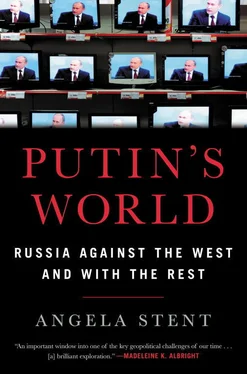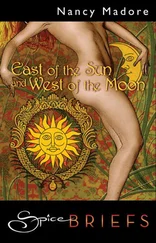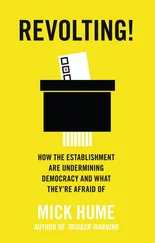Since Putin’s ascension to the Kremlin, domination of the new Eurasia—a vast expanse of territory from the Baltic Sea to the Pacific Ocean—has been an essential component of his main goal of restoring Russia as a great power.
The collapse of the Soviet Union created an unprecedented challenge for Moscow: how to interact with its new neighbors, some of whom had been part of the tsarist empire and the USSR for four centuries. Russia now had fourteen land neighbors. As Putin has pointed out, the United States has only two neighbors, enjoys generally good—if somewhat bumpy—political relations with both of them, and all three have increasingly integrated economies. The same cannot be said for Russia and some of its neighbors. Russia acquired Ukrainian lands in the seventeenth century and began expanding east to conquer all of Siberia by the late seventeenth century. Under Peter the Great, it absorbed the Baltic states. Under Catherine the Great, it acquired parts of Poland, Crimea, and Novorossiya, the lands north of the Black Sea that are the scenes of today’s separatist war. Russia moved south to conquer the Caucasus and Central Asia in the nineteenth century. In 1918, the Baltic states became independent—only to be reabsorbed by the USSR in 1940. The three states of Transcaucasia—Georgia, Armenia, and Azerbaijan—declared their independence after the Bolshevik Revolution, only to be reabsorbed by 1920. After World War Two, Kaliningrad and Western Ukraine became part of the USSR. At that point Stalin had achieved something the tsars had never accomplished. The USSR was larger than any other previous Russian state. The historical process of “gathering in the lands” appeared to be complete and unassailable. But Yeltsin’s signing of the Belavezha Accords in December 1991 dismantled the USSR with one fell swoop and reduced Russia to the smallest size it had been since 1654.
Russia, Ukraine, and Belarus dissolved the Soviet Union on December 8, 1991, in that Belavezha hunting lodge outside Minsk. They did not invite any other republics to the dissolution ceremony. The Central Asian countries objected, claiming they did not want to leave the USSR. But once the hammer-and-sickle flag was lowered from the Kremlin for the last time on Christmas Day 1991, they had no choice. The USSR was gone. The Soviet dissolution was termed a “civilized divorce” because, unlike in Yugoslavia, it had been relatively peaceful. It is important, more than a quarter century later, to remember that while some republics sought independence, others had independence thrust upon them, and this reluctant statehood has benefited Putin.
The Soviet system was essentially patrimonial—the Kremlin and the rulers of the republics maintained their positions of authority in return for distributing resources to a network of supportive clients scattered throughout the country. All political competition took place informally at the elite level, rather than through elections or political parties. Patronage politics worked particularly well in the clan-based societies of Muslim Central Asia. The “second economy,” or black market, that existed throughout the USSR was prevalent in the agricultural sector in Central Asia, with local producers and party officials colluding to falsify statistics and set up alternative networks of exchange for their products. Indeed, the system worked so well that, in contrast to other parts of the USSR, there was little public demand for reform in Central Asia under Gorbachev, hence the resistance to embrace independence. 5
Imperial Russia colonized the territories it conquered by sending Russian officials into its far-flung corners, seeking to assimilate local elites into Russian imperial structures. This process was quite successful in the Ukrainian lands but less so in other areas. Hence Lenin’s appeal to the non-Russian ethnic groups in the multinational empire. After the Bolshevik Revolution, Stalin, as commissar of nationalities, drew the borders of the new Union of Soviet Socialist Republics seeking to prevent one single ethnic group from dominating each of its fifteen constituent republics, with the exception of the Russian republic. In his native republic of Georgia, for instance, he included as autonomous subunits the territories of South Ossetia and Abkhazia, both of which held historical grievances against the Georgian people. This ensured friction, which eventually erupted into armed hostilities in the late 1980s when central authority was weakened. Every republic in the USSR was a multiethnic patchwork, and it was only the iron hand of the communist authorities that kept the peace and suppressed interethnic violence. During the entire Soviet period, a superstructure of Russified communist political institutions was superimposed on local customs and political cultures, which, after lying dormant for seventy-four years, reasserted themselves after 1991. The Kremlin has benefited from this Soviet legacy of ethnic resentments and contested borders, and has encouraged the frozen conflicts in the post-Soviet space.
Creating viable countries where none existed at the time of the Soviet collapse was a great challenge for the new states. Moreover, the transition from an imperial power to a post-imperial power—to accepting the independence of its neighbors—has been particularly challenging for Russia over the past quarter century. But rather than see Putin’s Russia as seeking to restore the USSR, it is more accurate to say that the Kremlin would like the outside world, and particularly the West, to treat it as if it were the Soviet Union: a nuclear superpower whose interests are as legitimate as any other great power, a country to be respected—and still feared. This means accepting that Russia has a right to a sphere of privileged interests in the post-Soviet space. As one Russian observer put it, “Accept us as we are; treat us as equals; and let’s do business where our interests meet.” 6But Russia is realistic enough to understand that it cannot re-create the USSR, nor would it want the economic burdens that would accompany an imperial restoration. Russia is today what might be called a “postmodern empire, in which many of the physical features of empire have disappeared, but where the imperial spirit is still present and even resurgent.” 7
Russia feels a sense of entitlement toward its neighbors based on shared history, language, and culture, what Foreign Minister Lavrov has called “civilizational commonalities” in the post-Soviet space. It believes that it has a droit de regard in its neighborhood. Russia’s national identity extends spatially beyond the current border of the Russian Federation to the borders of the USSR—minus the Baltic states. 8The very words Russians used to describe the former Soviet states—the “near abroad”—conveys that Moscow does not view Minsk or Yerevan or Astana as foreign capitals but as capitals of semi-independent entities with which Russia should enjoy a relationship that differs from that of “far abroad” powers. These outside powers should not treat Russia’s neighbors as they treat other, fully independent countries. There is also an important security dimension to these concerns. The Kremlin views the post-Soviet countries as part of its own defense perimeter and believes that it must control the strategic space in which they are located. Hence they must not join Western security organizations that are deemed hostile to Russia’s core interests—primarily NATO. 9
Russia’s ability to exert influence in its neighborhood has been facilitated by the persistence of the “post-Soviet syndrome” in all of the former Soviet republics—except the Baltic states. This syndrome exists on a continuum and is most pronounced in Central Asia and less so in some of Russia’s Western neighbors. Nearly three decades after the Soviet collapse, the rule of law, transparent governance, real political competition, and democratic institutions have barely taken root in most of the post-Soviet states, and their political systems resemble that of Russia far more than those of Europe or the United States. Post-Soviet countries are run by small groups of political and/or family clans, where nominally competitive elections are in fact managed and their outcomes often predetermined. As a Kazakh official said, “In Central Asia, people need a clear leader and controlled modernization.” Personal ties and informal networks are more important than institutions of governance, which are weak. The rule of law is also weak. There are few transparent succession mechanisms. The economy is controlled by a small elite with close ties to the political leadership, and together they control most of the country’s assets. Corruption and nepotism are rife. Freedom of expression is curtailed, and the electronic media are state run or controlled by magnates close to the leadership. Commercial ties between Russian oligarchs and wealthy business magnates in the post-Soviet states reinforce the influence of Russian ways of doing business. However, Ukraine, Georgia, Armenia, and Moldova do not exhibit all the features of the post-Soviet system. They have competitive elections whose outcomes cannot be predicted, and they permit greater freedom of expression. In most post-Soviet countries, the ties that bind are often stronger than those that divide Russia from many of its neighbors. Moreover, Russia, unlike the US or the EU, never criticizes its neighbors for democratic deficits.
Читать дальше












